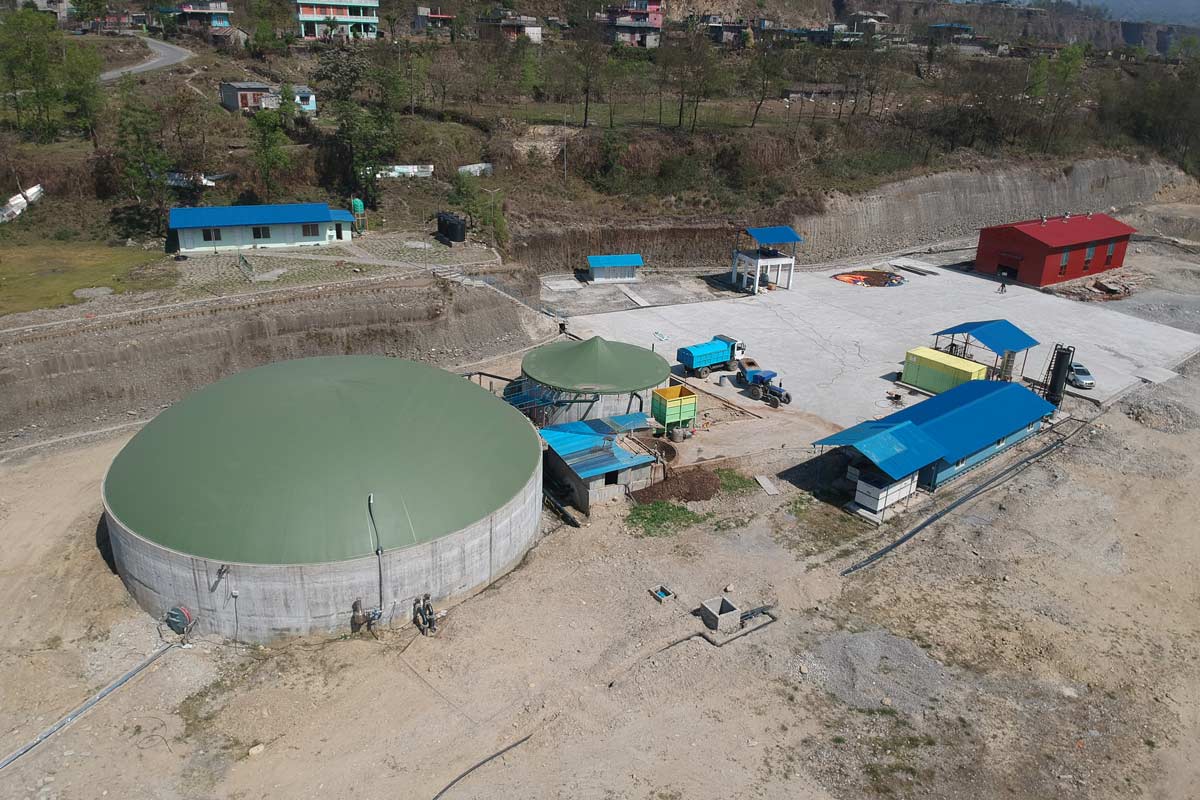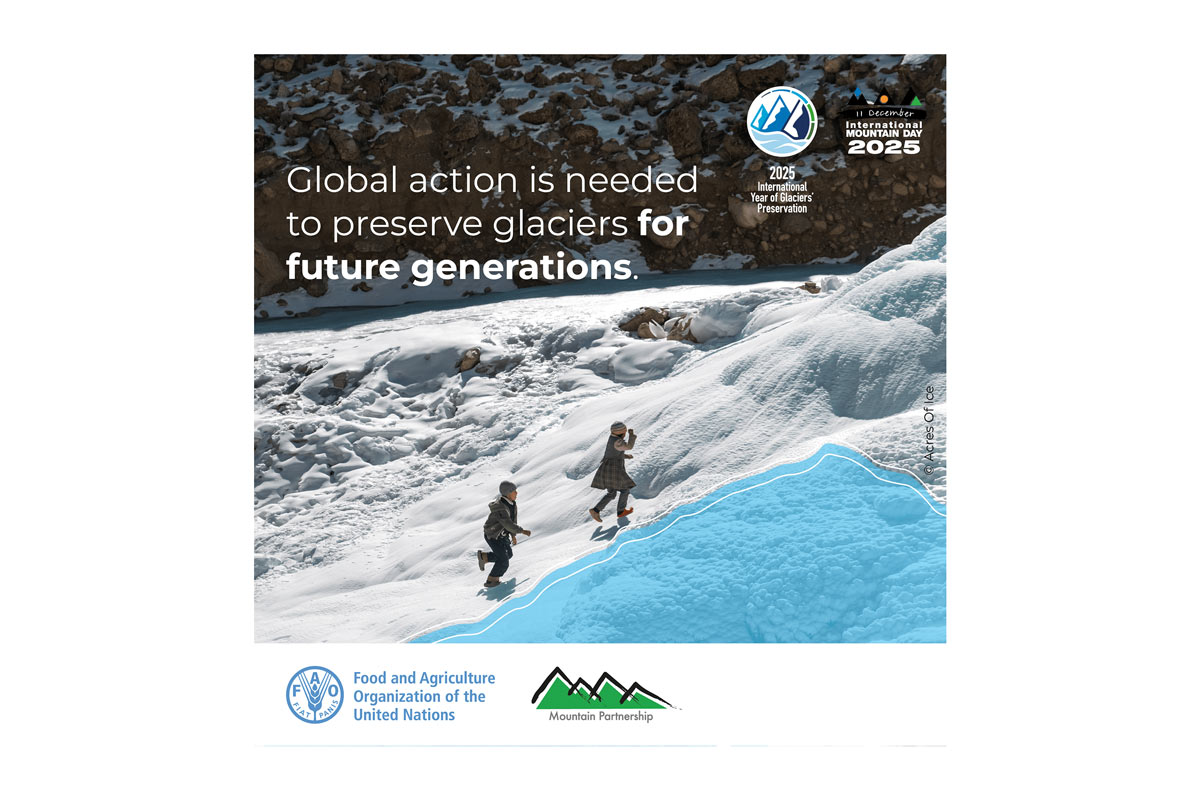NOMINEE PROFILE
 Location:
Location:A MOUNTAINEERING FOCUS
The Gandaki Urja compressed biogas plant project is located in Pokhara, Nepal, in the foothills of the Annapurna range. Our project is focused on conserving fragile mountain ecosystems by managing the organic waste, and replacing fossil fuels and chemical fertilizers, as well as supporting the livelihoods of the mountain communities in the Annapurna range.
BEST PRACTICES IN MOUNTAINEERING AND
MOUNTAIN-BASED SPORTS
Converting organic waste to generate compressed biogas and organic fertilizer is an innovative clean-tech project which generates revenue while saving the environment and improving the health of the local mountain communities in Nepal. It uses 45 tonnes of organic waste comprising of animal manure and municipal solid waste and generates biogas and organic fertilizer. Apart from energy generation, it reduces the emissions from animal manure and municipal solid waste. The project is expected to cut methane emissions by approximately 14,000 tonnes/year, and replace more than 37,000 LPG cylinders annually. Besides, it generates around 5,000 metric tonnes of organic fertilizer per year, which will largely benefit farmers in a country like Nepal where the majority of its population are involved in agriculture. The use of organic fertilizer will reduce the risk imposed by the use of chemical fertilizer preventing soil and water pollution, thus saving the fragile mountain ecosystem. Moreover, the biogas project will also aid in better health and sanitation of the people in the project area. Proper management of waste and use of clean energy source reduces the workload of the women who collect firewood and leads to a better life and improved health condition of the local people.
OPPORTUNITIES FOR VOLUNTEERS
The project is the largest biogas plant in Nepal. We invite mountain communities from all over the world to visit our site and learn about the technology and replicate it in their respective communities and countries. We already have an internship program for graduate engineers, agriculturist and environmentalists. We are also open to providing bespoke training for interested organisations.
RELATIONSHIP WITH LOCAL COMMUNITIES
The project requires a number of employees throughout the project implementation period. It has already recruited around 20 staff, of which most are employees from local indigenous communities. The local indigenous people have been given priority based on their skills to do the job. Gandaki Urja does not only provide employment opportunities but also helps in enhancing the skills and technical know-how of the local workforce. Furthermore, it has stimulated other businesses in the community to flourish, mainly local restaurants and shops. The project also offers organic fertilizer for the local farmers at a subsidized rate.
There is a Grievance Redressal Committee (GRC) formed in collaboration with the local community, to address the community’s grievance and as well as to support them where possible. Per the GRC’s decision we are already supporting the local mothers’ group, youth club and tol sudhar samiti (community development group) with their regular activities, such as helping with the local football tournament, road maintenance and conserving the traditional dance.
COLLABORATION WITH LOCAL AUTHORITIES
Gandaki Urja is collaborating with both local and national authorities. The project has received partial subsidy from the Government of Nepal’s Alternative Energy Promotion Center, which is under the Ministry of Energy, Water Resources and Irrigation (MoEWRI). Hence, it works closely with them. Meanwhile, at the local level, the Pokhara Metropolitan City has consented that the Company collect organic and vegetable waste generated from its vegetable market to be used as a raw material for the project. We have also been working with the Provincial Agriculture Ministry to provide organic fertilizers at a subsidized rate to the local farmers in the Gandaki Province.
GOALS AND OBJECTIVES
Vision:
– To make Nepal a clean green country by converting waste to generate clean energy and organic fertilizers.
Goals:
– To stop organic waste going to the landfill
– To replace fossil fuel from compressed biogas
– To promote organic farming
Objective:
– The main objective of the project is to build Compressed Biogas Bottling plant to process 45 tonnes of organic waste to generate 200 cylinders of compressed biogas and 15 tonnes of organic fertilizer per day
PROJECT MANAGEMENT
The company Gandaki Urja was incorporated in February 2016. It then completed all the required permits and began construction work in February 2018, which was completed in May 2019. The project is currently under trail operation and is expected to become fully operational by August 2019.
Expected Outcomes:
– The project is estimated to cut 14,000 tonnes of methane emission annually
– Gandaki Urja is expected to produce 5000 tonnes of organic fertilizer annually
– The project would supply 528,000 kg/year of Compressed Biogas substituting around 37,000 LPG cylinders annually
– The project is expected to save 15,000 tonnes of organic waste going to landfill annually
There are 22 staff currently working in the company, either full-time or part-time. Four administrative staff i.e. General Manager (1), Account and Administration officer (1), Marketing manager (1), Office Assistant (1) and eighteen Technical/Field staff consisting of Plant supervisor (1), Engineer (2), Lab technician/Micro Biologist (1), Plant labor (5), Driver (2), Helper (5) and Guard (2) will be required by the project.
HOW WE COMMUNICATE
Our company has its own website, Facebook page and LinkedIn profile through which we have been disseminating our project activities and results to the public.

To discover more about the UIAA Mountain Protection Award please click here.
Please note that the content published in this article is courtesy of the Award nominee. The UIAA has made minor revisions to the original submission.



